An epicurean adventure to: Denmark
Rundstykker, the beloved Danish breakfast roll isn't just any old pastry - it's a cultural icon!
These tasty little buns are a staple in Denmark's breakfast scene. Whether you slather them in butter or layer on some cheese and jam, Rundstykker is the perfect pick-me-up for any time of day, not just breakfast.
But it's not just about the sustenance it provides. Rundstykker has a rich history that dates back to the 19th century in Denmark when they were first introduced as a popular breakfast item.
They quickly became a staple in Danish cuisine and are now a beloved part of the country's cultural heritage.
It represents a sense of tradition, comfort and community. It's a food that brings people together and is an important part of daily life in Denmark.
So, give your morning routine a tasty boost with these delicious Danish breakfast rolls (and take some with you for lunch on the go!).
We've got you covered with easy-to-follow instructions for making Rundstykker right in your own kitchen.
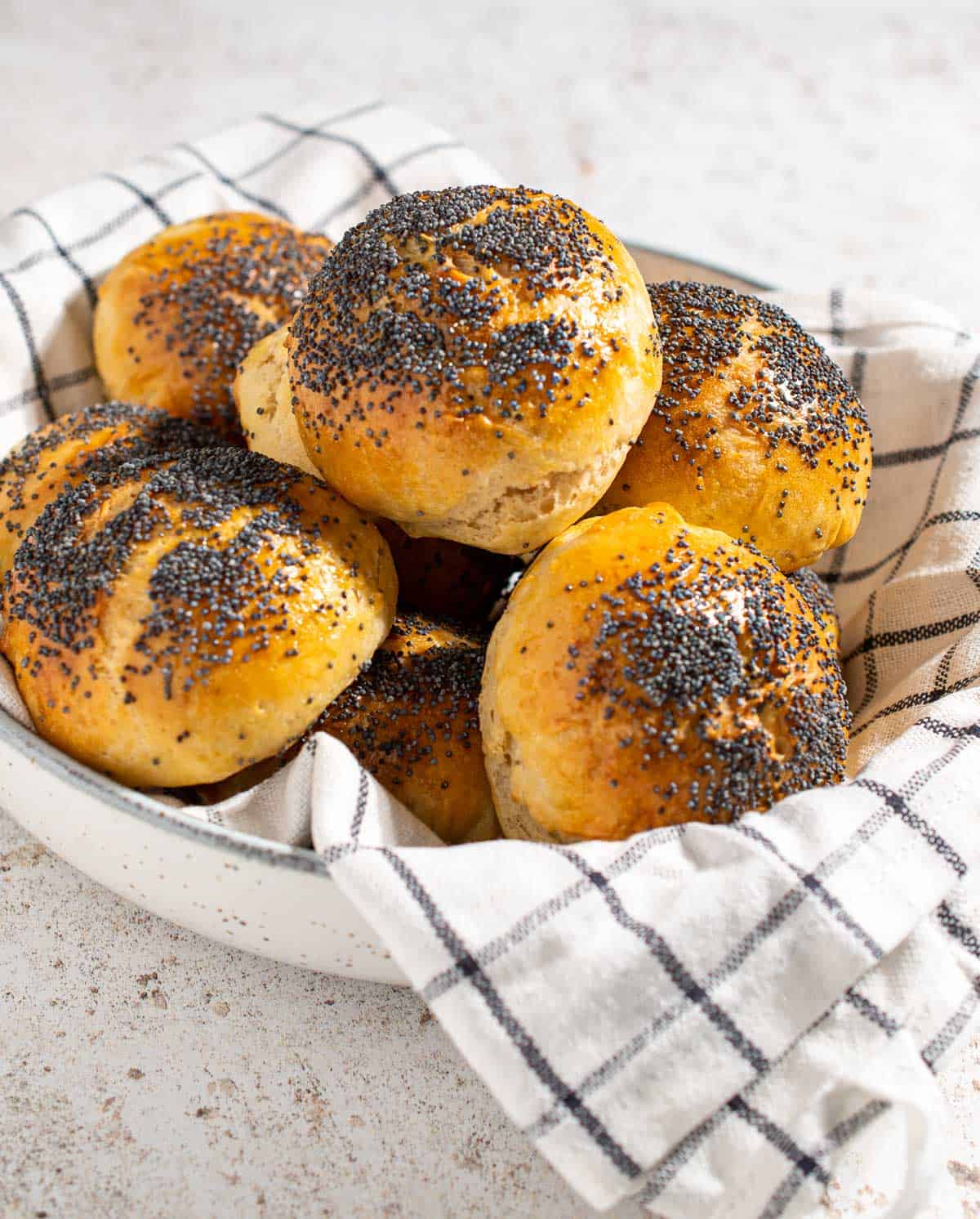
Jump to:
Denmark - Fast facts

| Location | Denmark is in Northern Europe and is the southernmost of the Nordic countries. It's bordered by Germany and has a long coastline along the North and Baltic Seas. |
| Language | The official language of Denmark is Danish, which is a North Germanic language. Many Danes also speak English and German and there are also small populations of speakers of Greenlandic, Faroese and other minority languages. |
| Population | Circa 5.8 million people. |
| Trivia | Denmark has consistently been ranked as one of the happiest countries in the world, with a strong social welfare system, high standard of living and emphasis on work-life balance. |
What's to love about this recipe
- Soft and fluffy, but substantial Danish breakfast buns.
- The recipe is easy to follow and you can make these delicious rolls at home with just a few simple ingredients found in most grocery stores anywhere in the world.
- Can be eaten on its own, or you can pair it with cheese, ham, butter, jam or any other topping of your choice.
- Rundstykker is a significant part of Danish culinary heritage and it's a delicious way to experience the country's food culture.
Key ingredient notes and substitutions
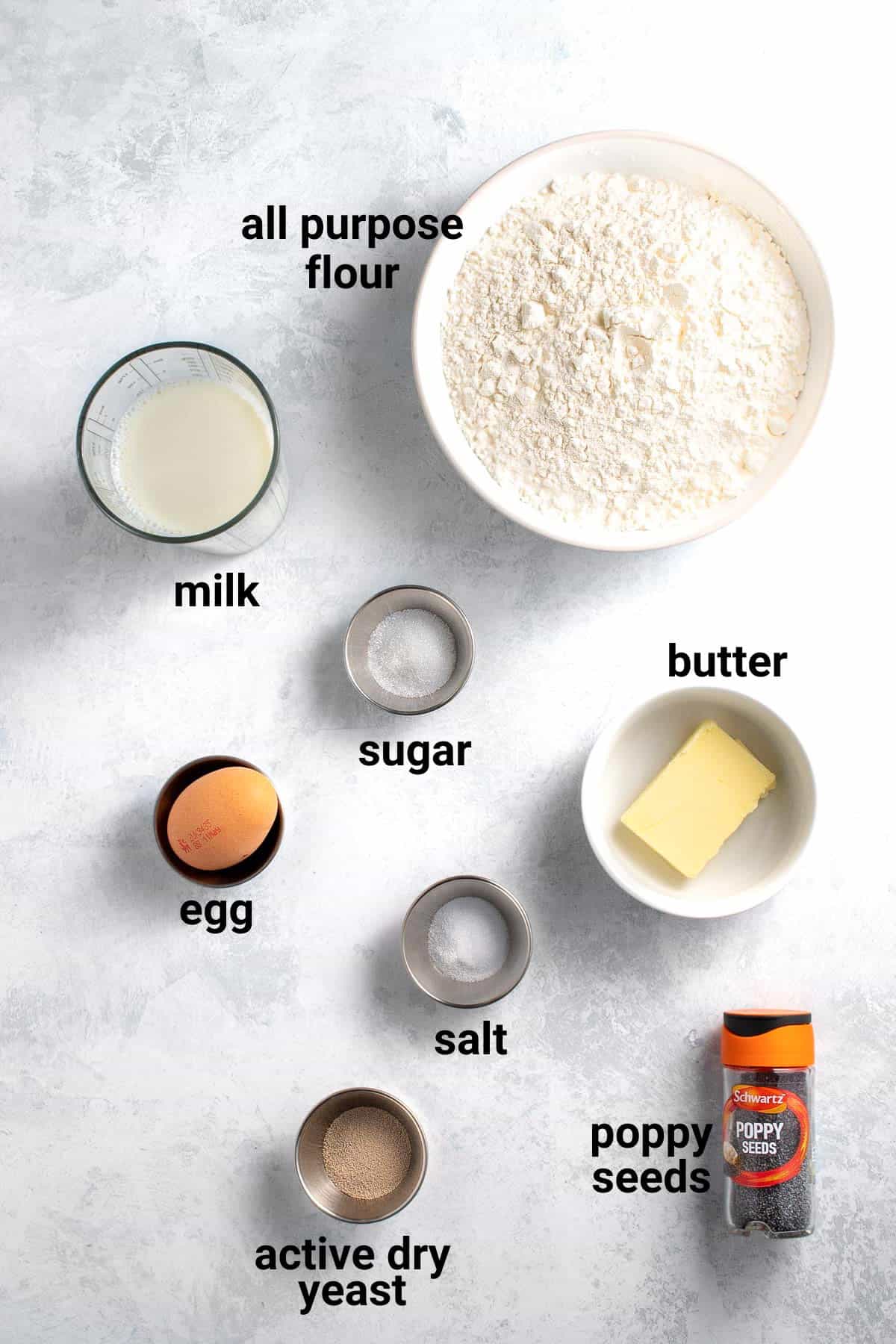
Milk
Use full-fat or semi-skimmed milk. The milk needs to be warm to help activate the yeast. If you want to be precise, the temperature should be between 43-46°C (110-115°F). Too hot and it will kill the yeast.
As a very rough guide, we heat fridge cold milk in a tall measuring jug for around 1-1.5 minutes in the microwave at the highest heat setting. Don't take this as gospel and test it first. It should feel slightly above room temperature.
Active dry yeast
It's important to check the expiration date on the yeast packet because expired yeast may not be effective.
We all have a packet sitting in the back of the cupboard only to be used once in a blue moon, so make sure it's still fresh.
Sugar
You can use granulated or caster sugar. Adding sugar to a yeast mixture is important because it acts as a food source for the yeast.
Yeast is a living organism that feeds on sugars to produce carbon dioxide gas, which causes the dough to rise. So, please don't skip the sugar.
Black poppy seed
Add as much or as little as you want. You can also leave it out entirely if you don't like seeds.
Egg
You will need one egg for brushing the rolls, giving in a lovely golden shiny surface. Beat the egg lightly in a small bowl.
How to make Rundstykker: Step-by-step
- Line a large baking tray with parchment paper.
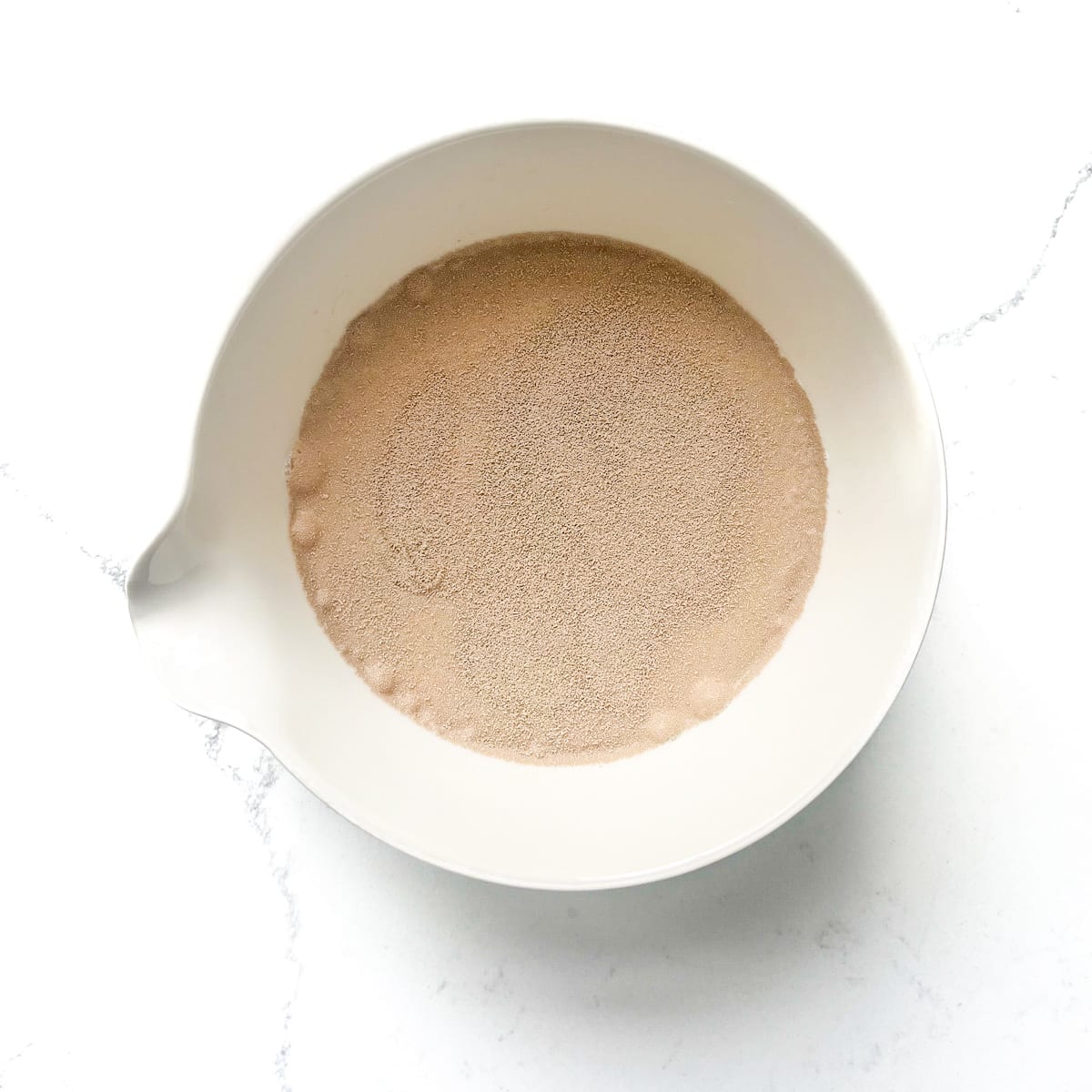
- In a bowl, add the warm milk, yeast and sugar. Give it a quick stir.
Note: The milk should not be boiling, just warm, slightly above room temperature. We heat ours in the microwave for about 1-1.5 minutes in a tall measuring jug.
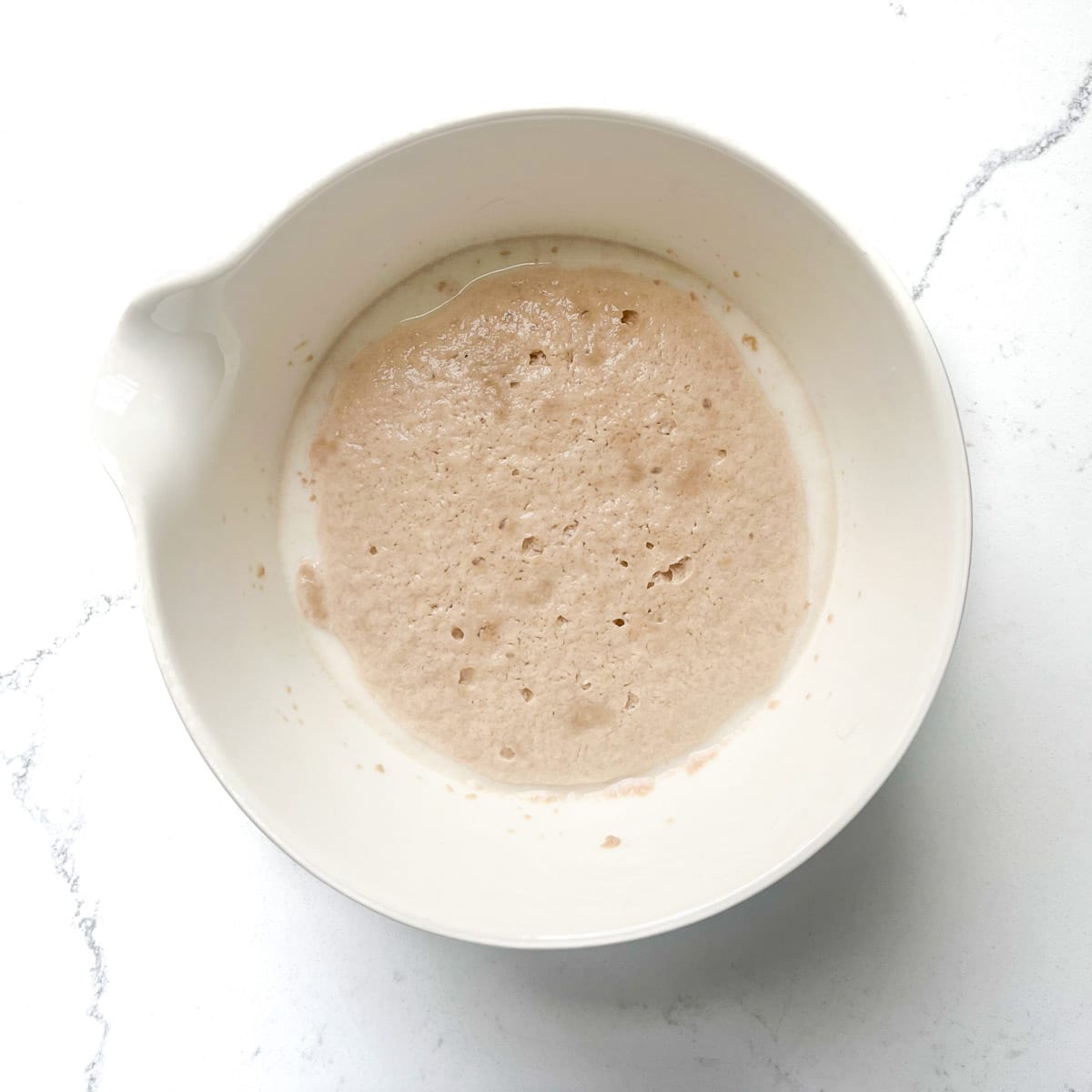
- Leave the yeast mixture to develop for 10-15 minutes.
Note: You can tell that an active dry yeast mixture has developed when it becomes frothy and bubbly on the surface. This indicates that the yeast is active and has started to feed on the sugar in the mixture, producing carbon dioxide gas as a by-product.
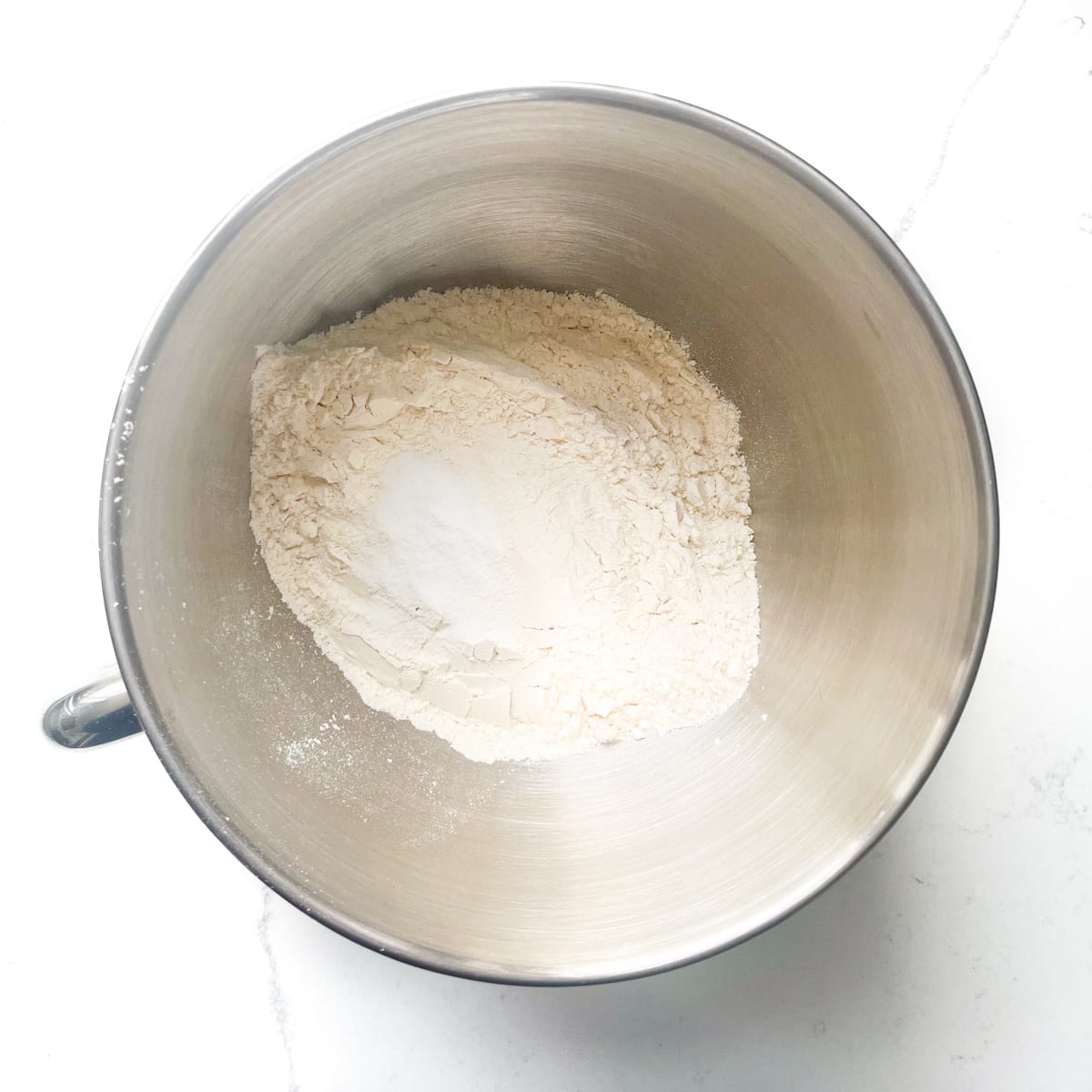
- In the meantime, add the flour and salt to the bowl of a stand mixer. Give it a stir to combine.
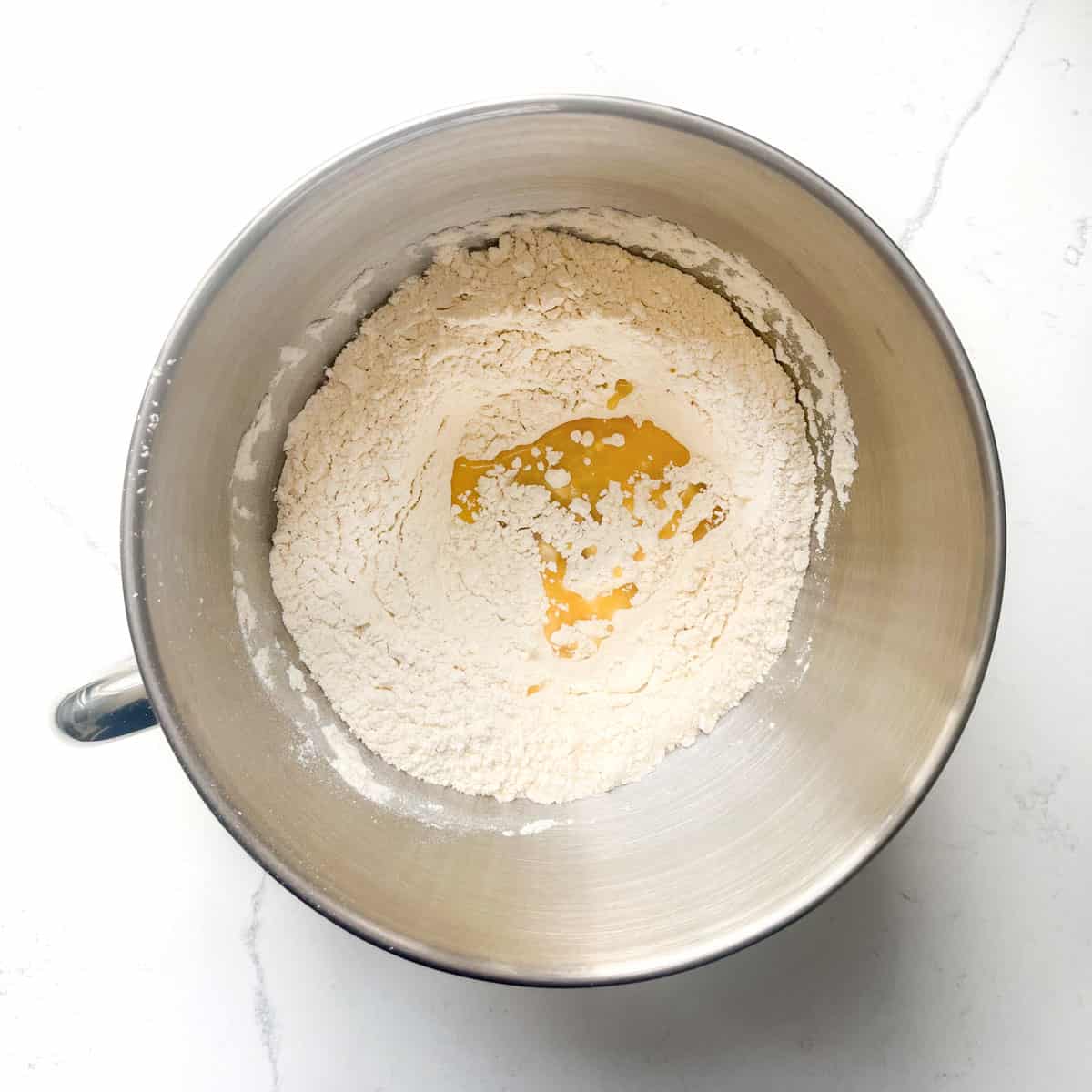
- Add the melted butter.
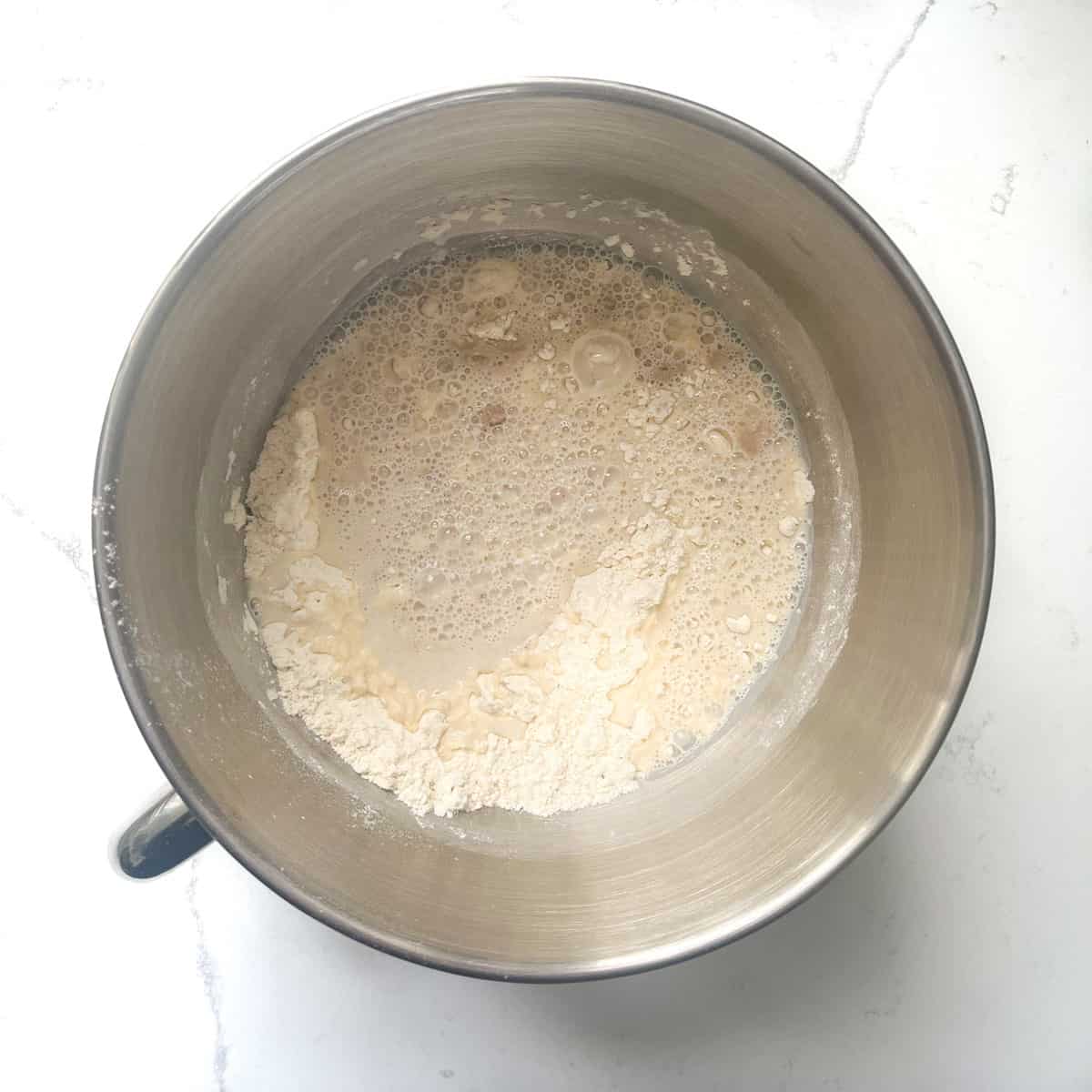
- Once the yeast is ready, add the yeast mixture to the flour.
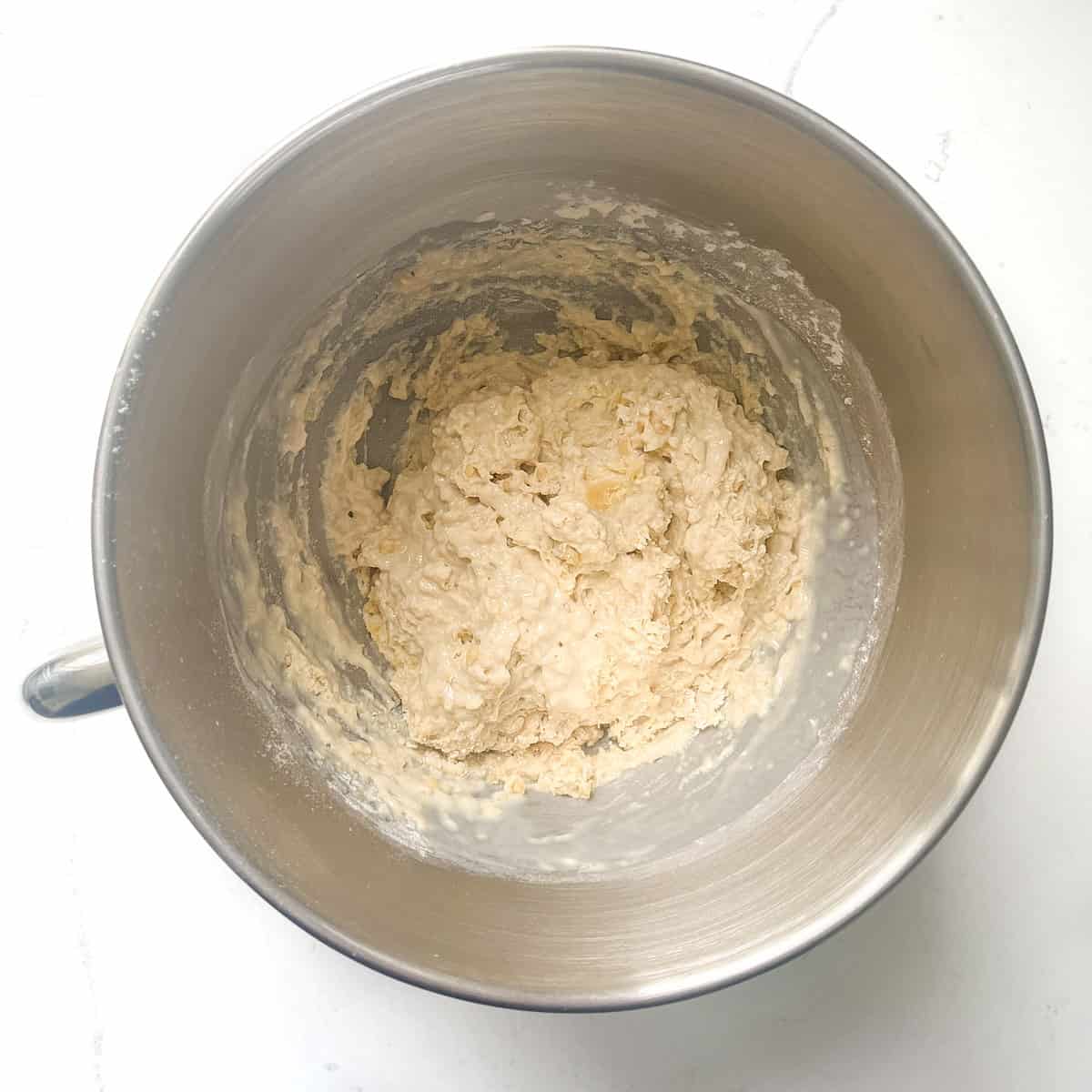
- Give the dough a quick stir with a fork.
- Using the dough hook on the stand mixer, knead for 10-12 minutes.
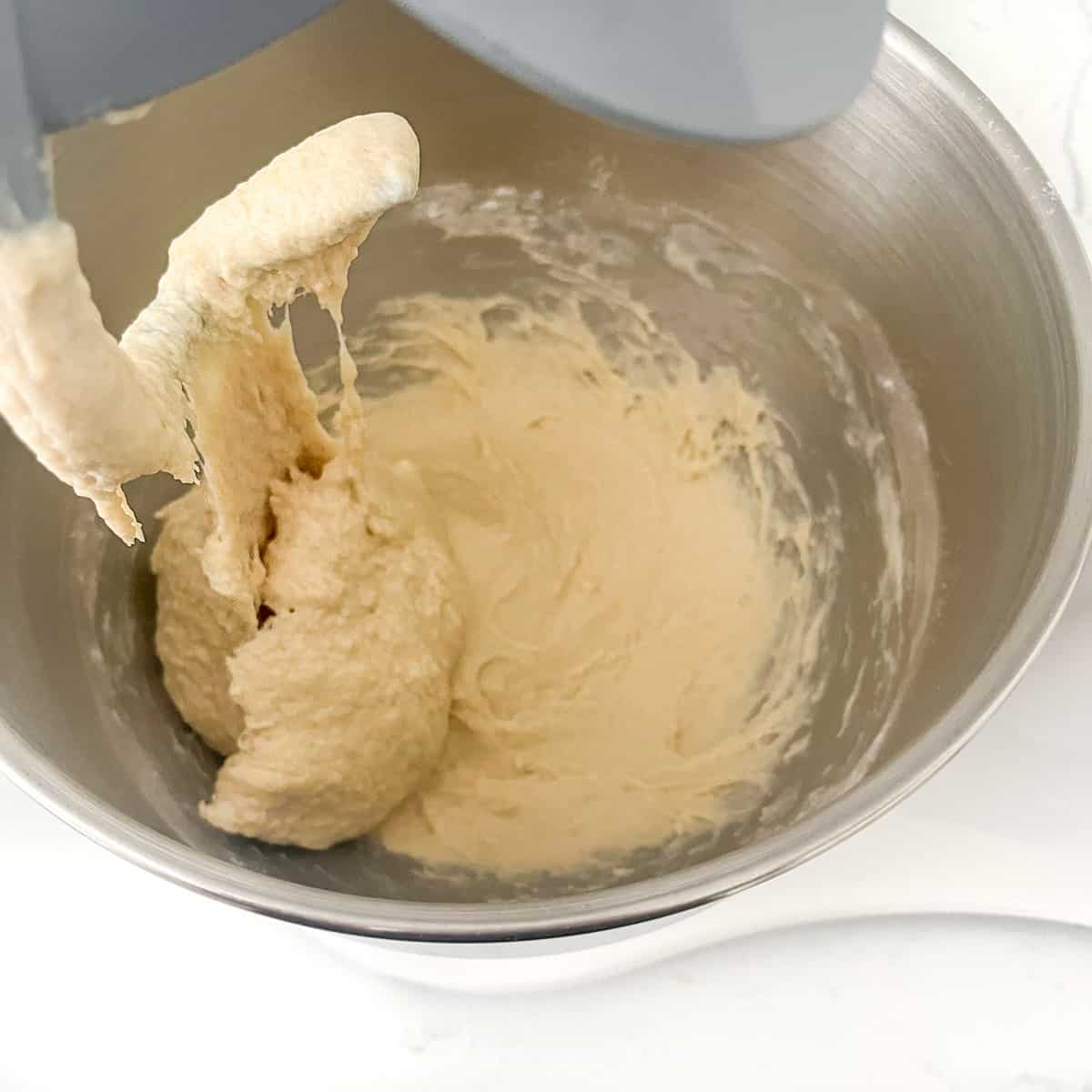
- At first the dough will look very sticky, as in the picture above.
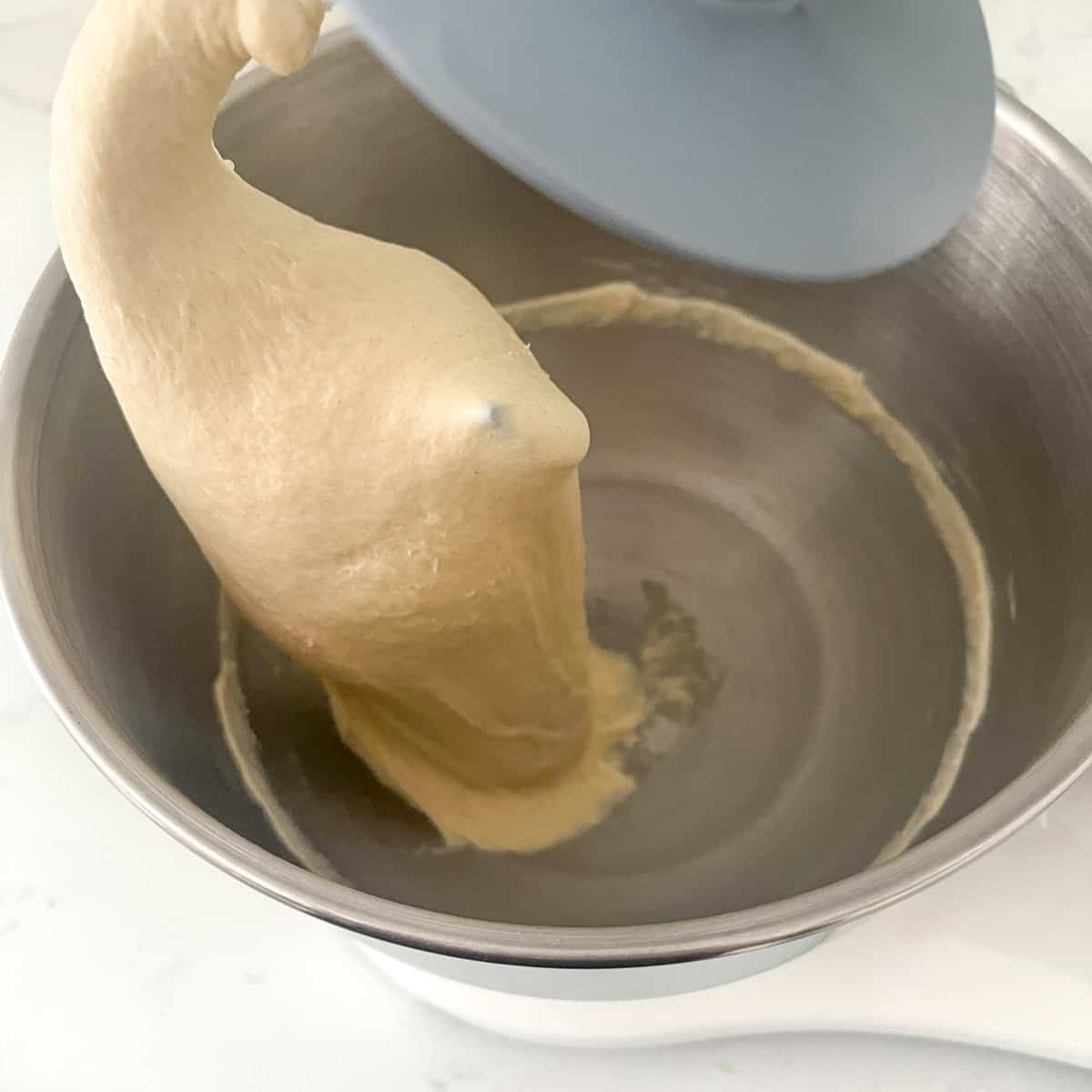
- After kneading, it will look much more uniform, smooth and elastic.
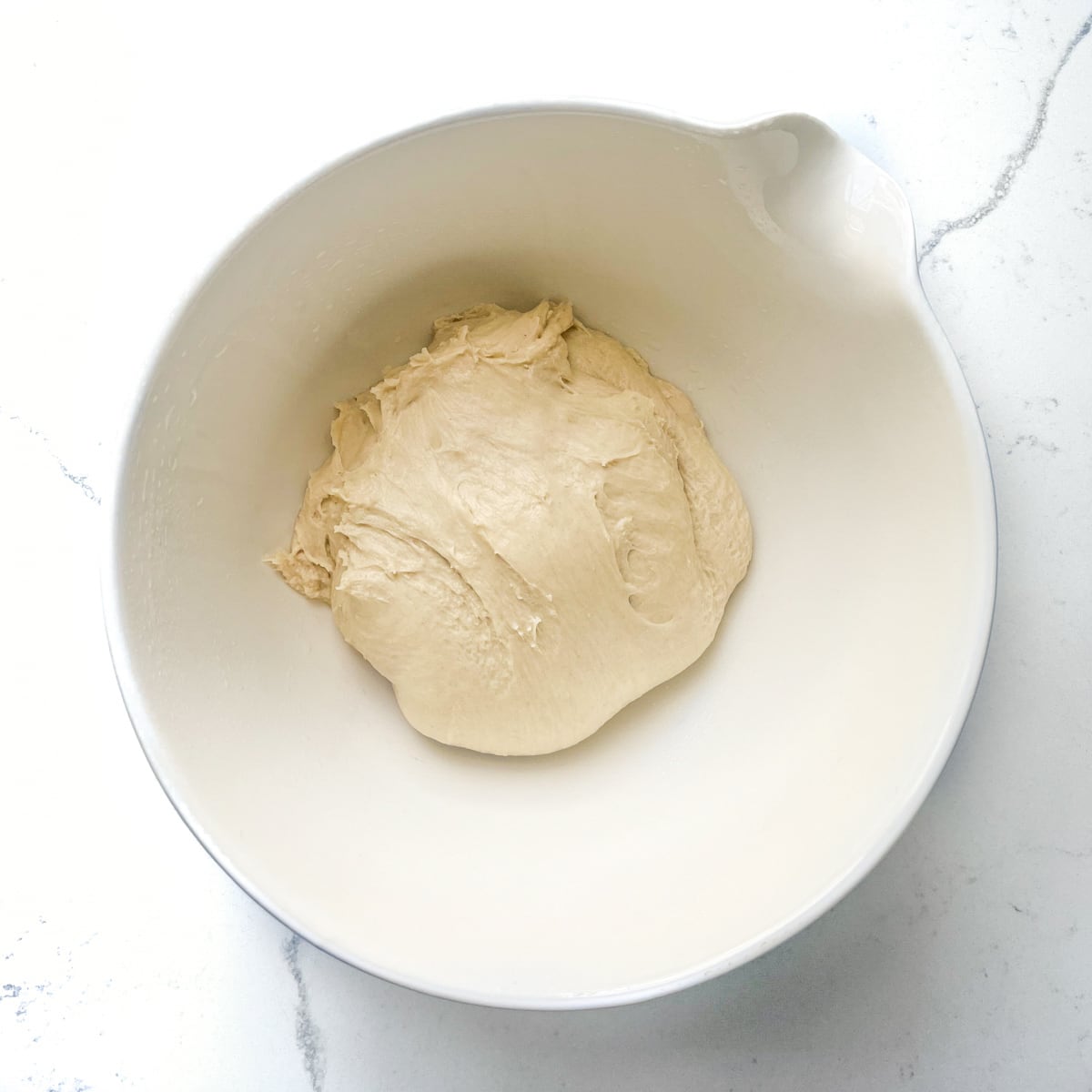
- Transfer the dough into a large, lightly oiled bowl.
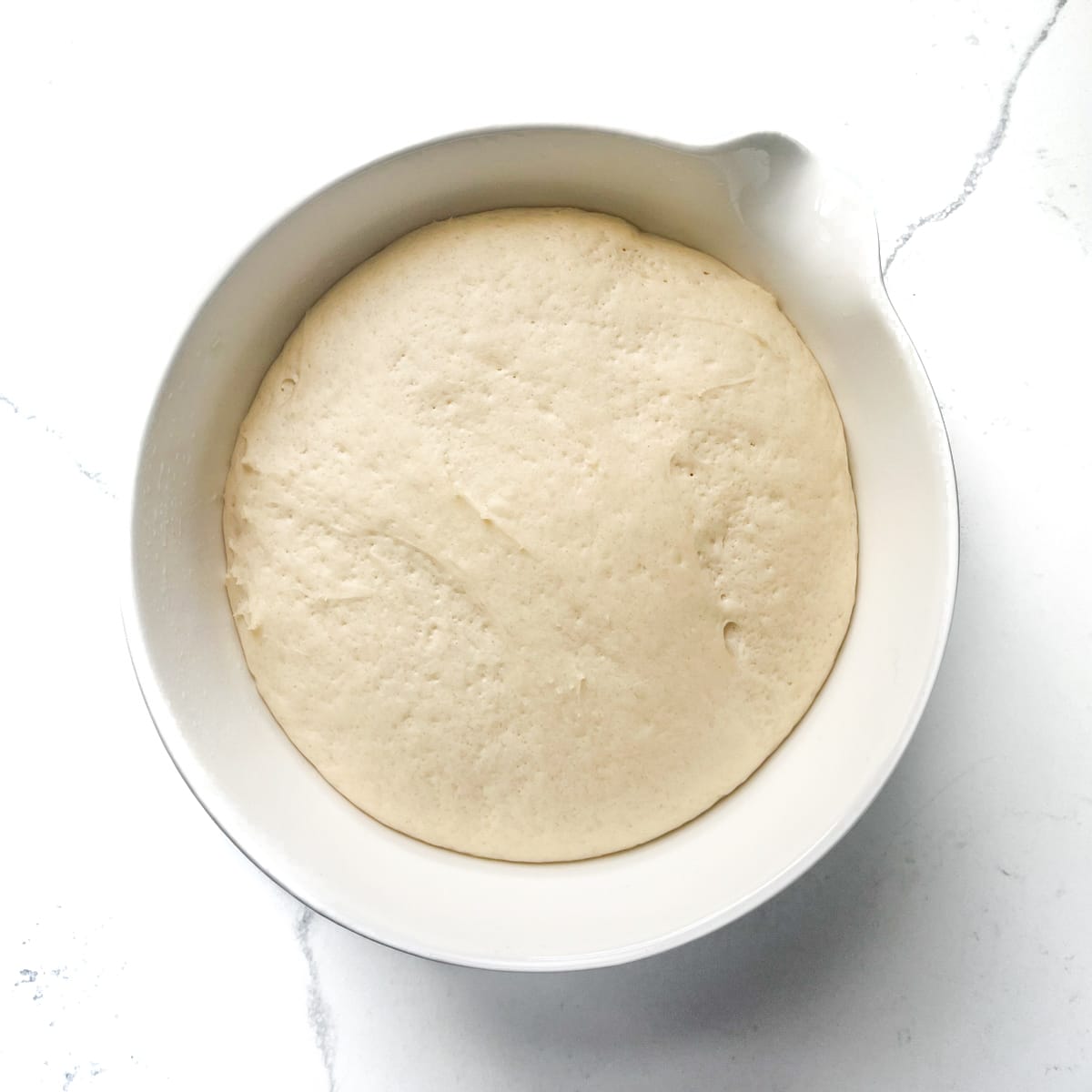
- Cover with a clean, dry tea towel and allow it to rise in a warm spot for 60-90 minutes until it's doubled in volume.
Tip: During the winter in the UK we like to put the oven on low heat for about 5 minutes to heat up. Switch the oven off and put the dough inside with the door slightly ajar. It's important that the oven is not at all hot, but just warm.
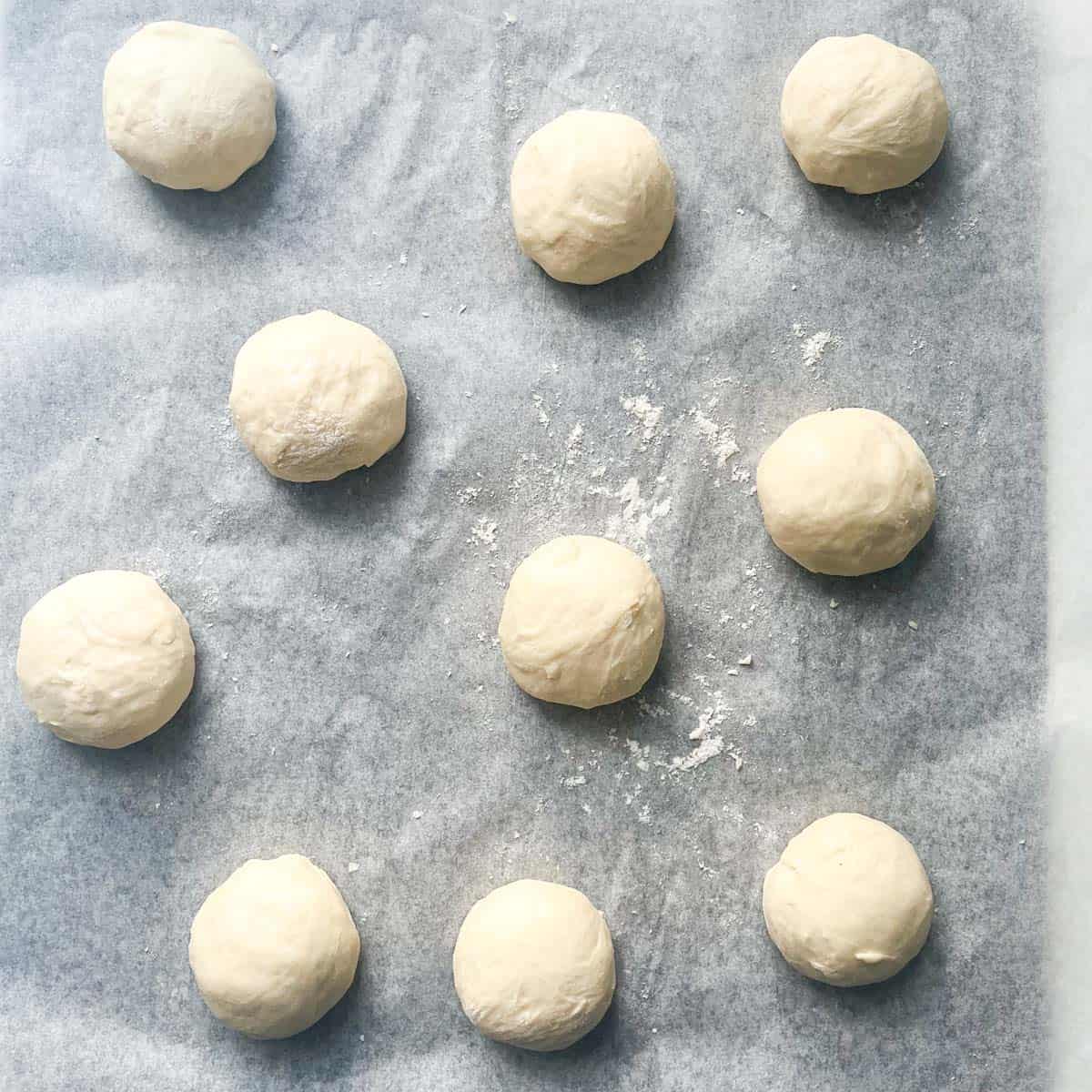
- When the dough has risen, cover your hands in flour and divide it into 10 equal pieces.
- Roll each piece into a ball and place it on a parchment-lined baking sheet. Allow enough space between each roll to allow for rising.
- Cover the tray loosely with a clean kitchen towel and allow it to rest for a further 30 minutes in a warm spot.
- Preheat the oven to 200℃/390℉/gas mark 6.
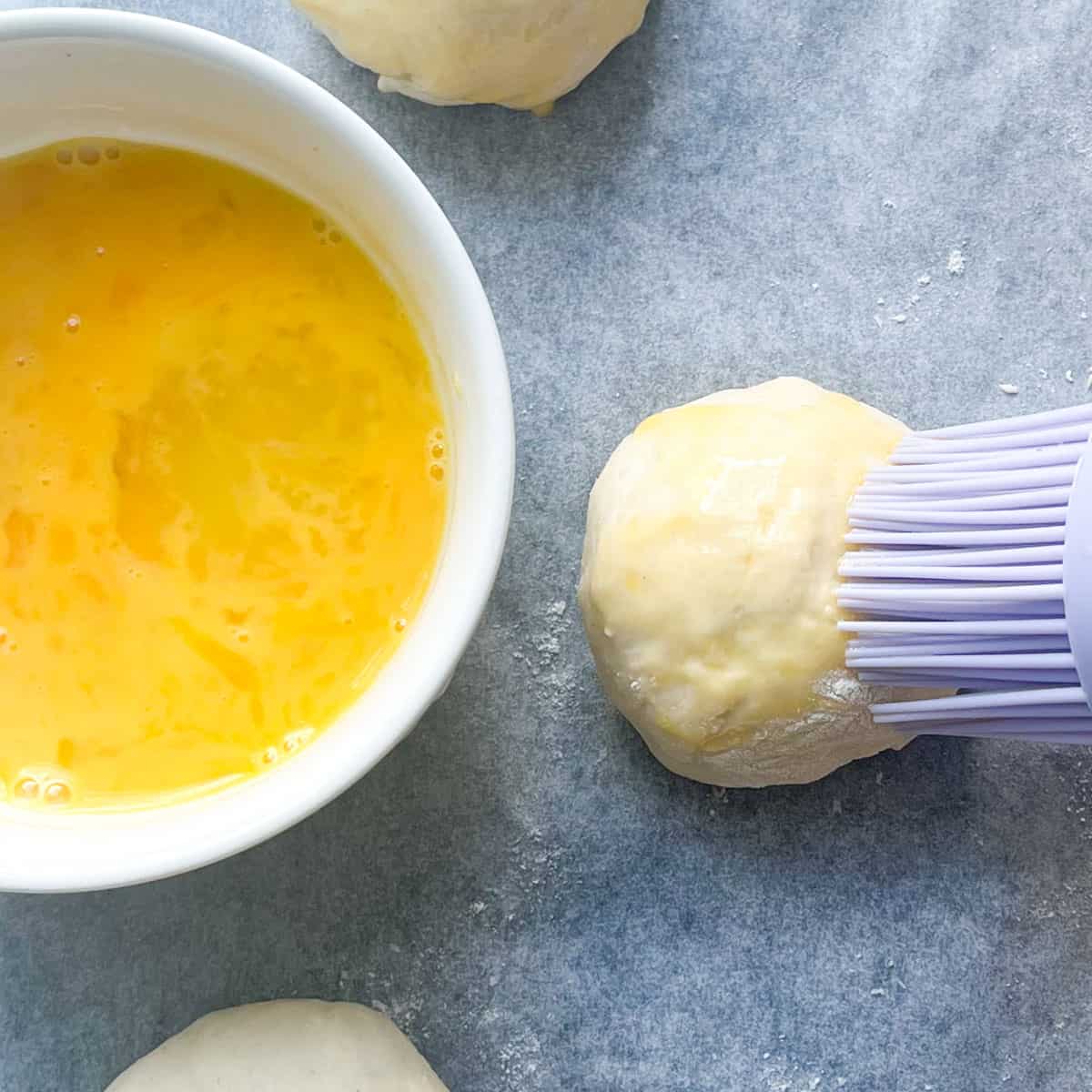
- When the dough has rested, brush the rolls with the lightly beaten egg and a pastry brush.
- Sprinkle poppy seeds over the surface. With the tip of a very sharp knife, scissors or a scalpel, cut a small cross on the top of each dough ball.
- Bake for 20-25 minutes until the rolls are golden brown, well-risen and baked through.
- Allow to cool for 5 minutes before transferring to a cooling rack.
Serving suggestions
Cheese and jam - Cut the Rundstykker in half and spread some Danish cheese, such as Havarti, on one side and jam, such as raspberry or black currant, on the other.
Cold cuts - Cut the Rundstykker in half and fill it with slices of Danish salami, ham or other cold cuts.
Butter and honey - Spread butter and honey on top of the Rundstykker for a sweet and simple breakfast.
Eggs - Slice the Rundstykker in half and add a fried or scrambled egg and some bacon for a hearty breakfast sandwich.
Served with a hot beverage - Enjoy the Rundstykker plain with a cup of coffee, tea or hot chocolate.
Mini sandwiches - Use them to make mini sandwiches with your favourite toppings like ham, cheese, cucumber and tomato.
Toasted - Toast them and spread some butter and jam on top.
With soup - Serve them with a warm bowl of soup or stew.
Cheat's smørrebrød - Make a Danish-style smørrebrød by topping the Rundstykker with sliced meats, cheeses and vegetables.
Top tips
- Use good-quality ingredients, especially flour and yeast, to ensure the best results.
- Follow the recipe measurements and instructions carefully. Use digital kitchen scales to weigh out the ingredients.
- Knead the dough well to activate the gluten, which will help the bread rise and give it a chewy texture.
- Allow enough time for the dough to rise and rest, as this is essential for developing the flavour and texture of the bread.
- This is a medium soft dough, so it really helps immensely to keep some flour on hand when you start shaping the dough balls. Stick your fingers in the flour before breaking pieces off.
- Use a sharp knife, scalpel or scissors to make the cuts on the top of the bread before baking, as this will help the bread rise and give it its characteristic look.
- Bake the bread in a preheated oven at the right temperature and for the right amount of time to achieve a crispy crust and a soft, fluffy interior.
- Let the bread cool for a few minutes before serving, as this will help it to set and retain its shape.
Storage
It's important to note that freshly baked Rundstykker are always the best, so try to enjoy them as soon as possible after baking.
To keep leftover Rundstykker fresh, it is best to store them in an airtight container at room temperature for up to 2-3 days.
For longer storage, you can freeze them for up to 2-3 months. To defrost, simply leave them at room temperature for a few hours or pop them in the oven for a few minutes to regain their crispy texture.
Recipe
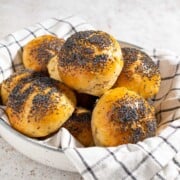
Rundstykker - Danish breakfast rolls
Equipment
- 1 stand mixer with dough hook attachment
- 1 large baking tray
Ingredients
- 300 millilitres warm milk
- 1½ teaspoon active dried yeast - 7.5ml. Make sure the yeast is still fresh and within date.
- 1½ teaspoon sugar
- 400 grams all purpose flour - and extra for handling the dough
- 1 teaspoon salt
- 30 grams unsalted butter - melted
- 1 egg - lightly beaten for brushing
- 3-4 tablespoons poppy seeds - for sprinkling
Instructions
- Line a large baking tray with parchment paper.
- In a bowl, add the warm milk, yeast and sugar. Give it a quick stir. Note: The milk should not be boiling, just warm, slightly above room temperature. We heat ours in the microwave for about 1 minute in a tall measuring jug.300 millilitres warm milk, 1½ teaspoon active dried yeast, 1½ teaspoon sugar
- Leave the yeast mixture to develop for 10-15 minutes. Note: You can tell that a yeast mixture has developed when it becomes frothy and bubbly on the surface. This indicates that the yeast is active and has started to feed on the sugar in the mixture, producing carbon dioxide gas as a by-product.
- In the meantime, add the flour and salt to the bowl of a stand mixer. Give it a stir to combine.400 grams all purpose flour, 1 teaspoon salt
- Add the melted butter.30 grams unsalted butter
- Once the yeast is ready, add the yeast mixture and give the dough a quick stir with a fork.
- Using the dough hook on the stand mixer, knead for 10-12 minutes.At first the dough will look very sticky. After kneading, it will look much more uniform, smooth and elastic.
- Transfer the dough into a large, lightly oiled mixing bowl. Cover with a kitchen towel and allow it to rise in a warm spot for 60-90 minutes until it's doubled in volume. Tip: During the winter in the UK we like to put the oven on a low heat for about 5 minutes to heat up. Switch the oven off and put the dough inside with the door slightly ajar. It's important that the oven is not at all hot, but just warm.
- When the dough has risen, cover your hands in flour and divide it into 10 equally sized pieces. Roll each piece into a ball and place on a parchment lined baking tray. Allow enough space between each roll to allow for rising.
- Cover the tray loosely with a clean kitchen towel and allow to rest for a further 30 minutes in a warm spot.
- Preheat the oven to 200℃/390℉/gas mark 6.
- When the dough has rested, brush the rolls with the lightly beaten egg and a pastry brush.1 egg
- Sprinkle over the poppy seeds. With the tip of a very sharp knife, or a scalpel, cut a small cross in the top of each roll.3-4 tablespoons poppy seeds
- Bake for 20-25 minutes until the rolls are golden brown, well risen and baked through. Allow to cool for 5 minutes before transferring to a cooling rack.
Notes
- Use good-quality ingredients, especially flour and yeast, to ensure the best results.
- Follow the recipe measurements and instructions carefully. Use digital kitchen scales to weigh out the ingredients.
- Knead the dough well to activate the gluten, which will help the bread rise and give it a chewy texture.
- Allow enough time for the dough to rise and rest, as this is essential for developing the flavour and texture of the bread.
- This is a medium soft dough, so it really helps immensely to keep some flour on hand when you start shaping the dough balls. Stick your fingers in the flour before breaking pieces off.
- Use a sharp knife, scalpel or scissors to make the cuts on the top of the bread before baking, as this will help the bread rise and give it its characteristic look.
- Bake the bread in a preheated oven at the right temperature and for the right amount of time to achieve a crispy crust and a soft, fluffy interior.
- Let the bread cool for a few minutes before serving, as this will help it to set and retain its shape.
**Nutritional data disclaimer**
Please keep in mind that the nutritional information provided below is calculated by a third party and we cannot guarantee the accuracy. We try our best to give you the most accurate information, but we do not take responsibility for errors that may be present. Also, the nutritional value of the recipe may change depending on the exact brands and products used. We recommend that you consult with a qualified healthcare professional or registered dietitian for personalised advice on your dietary needs.
Nutrition
For food safety advice, including guidance on food allergies



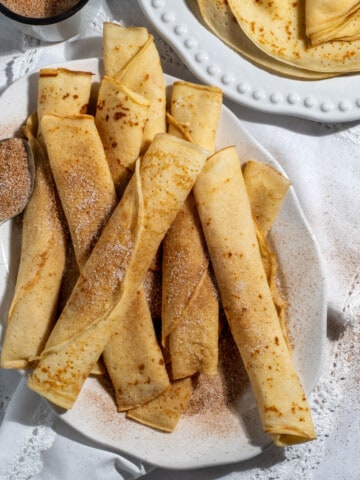
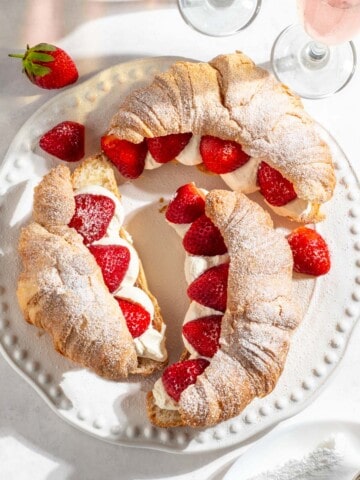
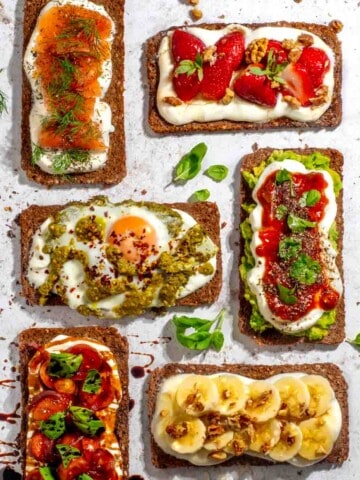
Leave a Reply